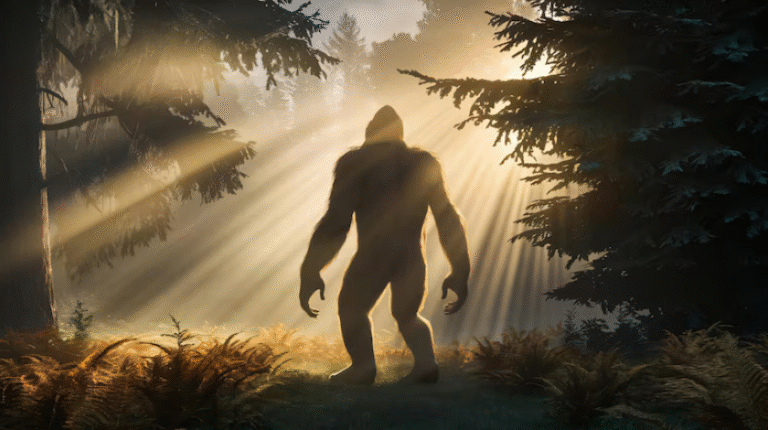What if our fascination with Bigfoot has a downside? While belief in this legendary creature may seem harmless, accepting its existence without evidence can lead to real-world risks. From cognitive distortion to wasted resources and even dangerous behaviors there’s more at stake than campfire stories. In this article, we’ll unpack the risks or harms with believing in Bigfoot, exploring how misguided convictions can affect individuals, communities, and society. We’ll draw on psychological research, real-world case studies, and expert commentary to offer a well-rounded, trustworthy exploration. If you’re serious about critical thinking and want to understand the hidden consequences behind cryptid belief, keep reading.
H2: Understanding Belief in Bigfoot
H3: Roots in Pseudoscience and Folklore
-
Bigfoot emerges from First Nations lore (Sasquatch) and was popularized in mid‑20th century reports like the Patterson–Gimlin film Reddit+2Reddit+2arXiv+2Reddit+2Financial Times+2Wikipedia+2.
-
Despite lack of bodies, DNA, or credible evidence, belief persists via anecdotal sightings, footprints, and alleged recordings WikipediaU.OSU.
H3: Psychological Drivers Behind the Belief
-
Confirmation bias and motivated reasoning lead believers to select stories that reinforce Bigfoot’s existence, ignoring contradictions The ConversationU.OSU.
-
Social echo chambers online and at conferences cement belief through group reinforcement Wikipedia+12The Conversation+12arXiv+12.
H2: Real‑World Risks or Harms with Believing in Bigfoot
H3: Cognitive and Epistemic Consequences
-
Belief in Bigfoot can erode critical reasoning skills, making people more susceptible to pseudoscience and conspiracy theories arXiv+13The Conversation+13Reddit+13.
-
This spillover hemmed effect has been linked to broader resistance to accepted science, including climate change or vaccinations RedditThe Conversation.
H3: Financial Costs and Opportunity Loss
-
Believers invest time and money into expeditions, equipment, festival attendance, and merchandise.
-
Example: attendees at Sasquatch Summer Fest in Oregon pay entry and travel costs, with little to no scientific payoff Financial Times.
H3: Physical Danger and Legal Risks
-
Expeditions in wilderness areas pose risks of injury, exposure, and even death: e.g., two men died searching for Bigfoot in a Washington forest in December 2024 Wikipedia.
-
Misidentification incidents: hunters have shot at people, mistaking them for Bigfoot for instance, in 2018 a man in Montana was shot by a hunter thinking he was Bigfoot Wikipedia.
-
Legal consequences: some states (e.g. Washington, Oregon) protect “cryptids,” making shooting one potentially illegal Reddit+1Wikipedia+1.
H3: Social and Cultural Impacts
-
Bigfoot fandom can be exploited for marketing, trivializing folklore and undermining legitimacy RedditWikipedia.
-
True believers may face social ridicule or marginalization in academic or rationalist communities.
H2: Case Studies & Examples
| Case | Description | Harm or Risk |
|---|---|---|
| Sasquatch Summer Fest, Oregon | Annual event focused on Bigfoot talks and “research” Financial Times | Monetary cost, time wasted, reinforces group-think |
| Montana hunter shooting incident (2018) | Hunter shot a friend thinking he was Bigfoot Wikipedia | Physical harm, legal exposure |
| Washington forest deaths (Dec 2024) | Two men died while hunting Bigfoot in severe weather Wikipedia | Fatal risk from outdoor expeditions |
H2: Why These Beliefs Persist (Pros & Cons)
H3: Pros of Believing in Bigfoot
-
Offers mystery, excitement, and connection to folklore.
-
Strengthens community bonds among enthusiasts.
-
Encourages outdoor exploration and amateur research.
H3: Cons: The Real Risks or Harms with Believing in Bigfoot
-
Cognitive biases and reinforcing misinformation.
-
Financial losses on unproductive endeavors.
-
Serious physical danger or injury.
-
Legal exposure for harmful actions.
-
Cultural trivialization and reputational damage.
H2: How to Navigate Belief Carefully
H3: Steps to Apply Critical Thinking
-
Evaluate evidence critically demand tangible data (DNA, specimens).
-
Consider alternative explanations misidentification, hoaxes, natural phenomena.
-
Recognize personal and social biases question group consensus.
-
Limit risky field activity never venture alone; always prepare.
-
Educate on wildlife safety and wilderness skills.
H3: When Enthusiasm Becomes Problematic
-
Spending beyond means or neglecting obligations.
-
Ignoring safety in search expeditions.
-
Resisting correction or skepticism despite counter‑evidence.
H2: Addressing PAA Queries & NLP Terms
-
Is believing in Bigfoot dangerous?
Not inherently, but it may lead to poor decisions, hazard exposure, and legal risk. -
Does belief in Bigfoot affect critical thinking?
Yes confirmation bias and echo chambers can reduce skepticism in other domains. -
What harm can Bigfoot festivals cause?
Primarily wasted resources and reinforcement of pseudoscientific ideas.
Conclusion + CTA
Believing in Bigfoot can be fun but naïve or uncritical belief carries hidden costs. From impaired reasoning and wasted resources to real danger and legal exposure, the risks or harms with believing in Bigfoot are tangible. That doesn’t mean imagination or wonder are bad it means we should balance curiosity with skepticism.
If you’re an educator, skeptic, or blogger, here’s a suggested internal linking anchor:
-
“critical thinking in pseudoscience” linking to a long-form guide on evaluating fringe claims.
-
“safety in wilderness expeditions” linking to a practical outdoor gear and planning article.
FAQs (structured for schema intent)
Q1: What are the main risks or harms with believing in Bigfoot?
A: Risks include cognitive distortion, wasted time/money, physical danger, legal issues, and social credibility loss.
Q2: Can Bigfoot belief lead to violence?
A: Yes. There have been incidents where people were shot or harmed due to misidentification in Bigfoot hunting scenarios.
Q3: Does believing in Bigfoot make me more prone to conspiracy theories?
A: Research shows belief in one pseudoscience often correlates with acceptance of other unsupported claims due to cognitive biases.
Q4: Are Bigfoot researcher groups financially harmful?
A: While some do it as hobby, many invest thousands in trips or merchandise with little return or scientific credibility.
Q5: How can I enjoy cryptid lore safely?
A: Appreciate folklore in literature or media. Avoid reckless expeditions, seek credible sources, and stay aware of evidence standards.

